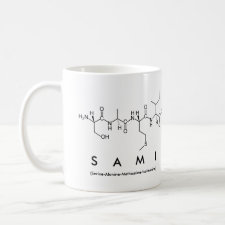
Authors: Claude B, Morin P, Bayoudh S, de Ceaurriz J
Article Title: Interest of molecularly imprinted polymers in the fight against doping: Extraction of tamoxifen and its main metabolite from urine followed by high-performance liquid chromatography with UV detection.
Publication date: 2008
Journal: Journal of Chromatography A
Volume: 1196-1197
Issue: (1-2)
Page numbers: 81-88.
DOI: 10.1016/j.chroma.2008.05.022
Alternative URL: http://www.sciencedirect.com/science/article/B6TG8-4SJP7FR-2/1/ade00cbd88f399719c07f6c774fa06d4
Abstract: A molecular imprinted polymer (MIP) has been synthesized in order to specifically extract tamoxifen, a nonsteroidal antiestrogen, and its metabolites from urine by solid-phase extraction (SPE) before HPLC-UV analysis. Clomiphene, a chlorinated tamoxifen analogue, was selected as template for MIP synthesis. Polymerisation was achieved by thermal polymerisation of methacrylic acid (MAA) as functional monomer, ethylene glycol dimethacrylate (EDMA) as cross-linking agent and acetonitrile as porogen. The efficient elimination of the urinary matrix has been obtained by MIP-SPE but the elution recovery of tamoxifen was initially too low ([approximate]14%). This problem has been overcome following two ways. At first, a preliminary HLB-SPE of the urine has enabled to discard endogenous salts and to percolate an organic sample through the MIP cartridge. Extraction recoveries are equal to 56 and 74% for tamoxifen and 4-hydroxytamoxifen, respectively. Then, a second MIP has been prepared with styrene and MAA as functional co-monomers. Strong π-π interactions occurring between phenyl groups of styrene and tamoxifen promote rebinding of the analyte by the specific sites. The enhanced hydrophobic character of the imprinted polymer has enabled the direct percolation of urine through MIP-SPE and the easy elimination of endogenous salts from urine with only one aqueous washing step. HPLC-UV analysis has confirmed high extraction recoveries (85%) for tamoxifen and its metabolite with an enrichment factor of 8. This analytical protocol can selectively detect the presence of tamoxifen metabolites in urines and be useful as a proof of doping in competitive sports
Template and target information: clomiphene, tamoxifen, 4-hydroxytamoxifen
Author keywords: molecularly imprinted polymer, Tamoxifen, methacrylic acid, styrene, urine, Solid-phase extraction, Metabolite



Join the Society for Molecular Imprinting

New items RSS feed
Sign-up for e-mail updates:
Choose between receiving an occasional newsletter or more frequent e-mail alerts.
Click here to go to the sign-up page.
Is your name elemental or peptidic? Enter your name and find out by clicking either of the buttons below!
Other products you may like:
 MIPdatabase
MIPdatabase









